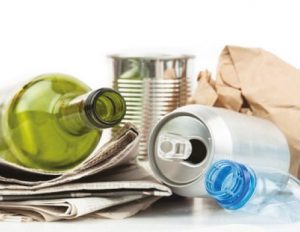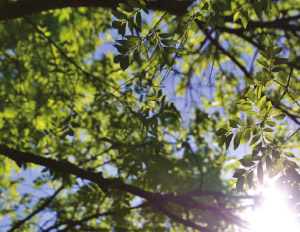
Theme: Recycling
Thursday 27th July 2017With Recycle Now’s annual week of awareness taking place at the end of September, why not get involved using these themed ideas.
1. Get Creative: Recycle Challenge
Collect together used items such as toilet roll tubes, plastic bottles, paper, cardboard boxes (i.e. cereal boxes or juice cartons) and plastic containers. You’ll be surprised what you can make with items you’d usually put in the bin or recycling bin. You could give the children a particular challenge or let their imaginations run wild and make something of their own choice.
2. Get Active: Recycle Relay
Equipment
- 3 bins or boxes (marked reuse, recycle and rubbish)
- Selection of unwanted items (clean and safe) for each team (ideally 10 items or at least 1 per person). This could include items like a carrier bag (reusable or recyclable), empty bottle (reusable or recyclable), toilet roll tube (reusable or recyclable), small box (reusable or recyclable), carton (reusable or recyclable), item of clothing (reusable or recyclable), crisp packet (rubbish, not recyclable) CD or DVD (reusable or rubbish, generally not recyclable), plastic toy or game (reusable or rubbish, not generally recyclable), newspaper (reusable or recyclable), magazine (reusable or recyclable), food packaging (reusable or recyclable), book (reusable or recyclable), toothpaste tube (rubbish, not recyclable).
Instructions:
- If you are using the same items for each team, mark one of each item with a number to indicate what each team did with each item.
- Mark a start line and from there set out the three bins/boxes, with the reuse box placed closest to the start line, then the recycle box and then furthest away the rubbish box.
- Place the items for each team in a box at the start line and get the children into teams for the race.
- The relay is started and the team members pickup an item from their box and decide which box/bin they are going to place the item in. They run to the box and place the item before returning to the team and the next team member goes.
- The game finishes when a team has placed all items in a box/bin. The more items they reuse and the more items they recycle the quicker they will have completed the relay. This also reinforces the idea that reusing is cheaper and requires less resources than recycling. Recycling, on the other hand, uses fewer resources than rubbish going to land fill.
- A leader then needs to review each item in each of the bins. The team members have to explain how they would reuse an item in the reuse bin to confirm that the items put in the recycling bin are actually recyclable.
- As the items are reviewed consider if the team members could of made a better choice (i.e. to reuse or recycle). After doing this, run the relay again to see how they do things differently.
3. Get Creative: Campaign
Get the children to think creatively as to how they could encourage others to recycle (and reuse) items rather than throw them away. See what ideas they come up with, these could include designing a poster, creating a song or a jingle or perhaps putting together a short role play. Could you share their efforts on social media?
4. Get Out & About: Collecting
Get the children involved in collecting items to recycle or that could be donated to a local charity or good cause. There are many charities out there that raise money from collecting unwanted items or through selling unwanted items, so see what your group could do to help. Items like mobile phones and printer cartridges can be collected and donated to specialist charity schemes through organisations like recycleforcharity.co.uk
5. Getting into the Bible: Caring for God’s Creation
Take the children on a short journey outside your meeting space to observe what is going on around us. Tell the children that we are going to see how well we’re taking care of God’s world, and to do this we’re going to go on a look-and-listen walk. Encourage the children to be quiet (silent ideally) and listen for all the sounds around them, and to look around at what they can see – thinking about God’s creation.
After a two-minute walk outside, bring the children back inside and discuss the sights and sounds. Ask about the natural and the human-made sounds. Talk about natural beauty and human-made creations. Ask the children about whether they think God would be pleased about all of this?
In the Bible in Genesis it says “God looked over all he had made, and he saw it was very good”. In six days God created all that we see in nature and then handed it over to us to take care of it. God’s plan was and is perfect, and the responsibility for carrying out that plan rests with us, to care for the world around us and do out bit.
Illustration
Get the children into 3 groups, you could do this by having them count off by threes. Have groups 1 and 2 form a big circle. Give each child in the circle a sheet of newspaper. Give each child in group 3 a carrier bag and ask them to get on their hands and knees in the middle of the circle. To start the illustration, groups 1 and 2 begin to tear the sheets of newspaper into little pieces and throw the pieces into the circle. Group 3 have the task of keeping the circle clean by picking up all the paper and putting it in the bags. After a short time (based on how things are going) stop the activity and see if group 3 was able to keep the circle clean.
Ask the groups to sit down where they are, in the circle or in the middle and ask them how they each felt. Go on to ask them how is this game like what’s happening in the world outside? Do you think God feels the same way?
Finish by asking the children what else they can do to help care for the Earth in which we live. If the children don’t mention these things, bring them up: recycle, reuse, walk or ride a bike instead of asking for a ride in a car, and use water and other
resources carefully.






